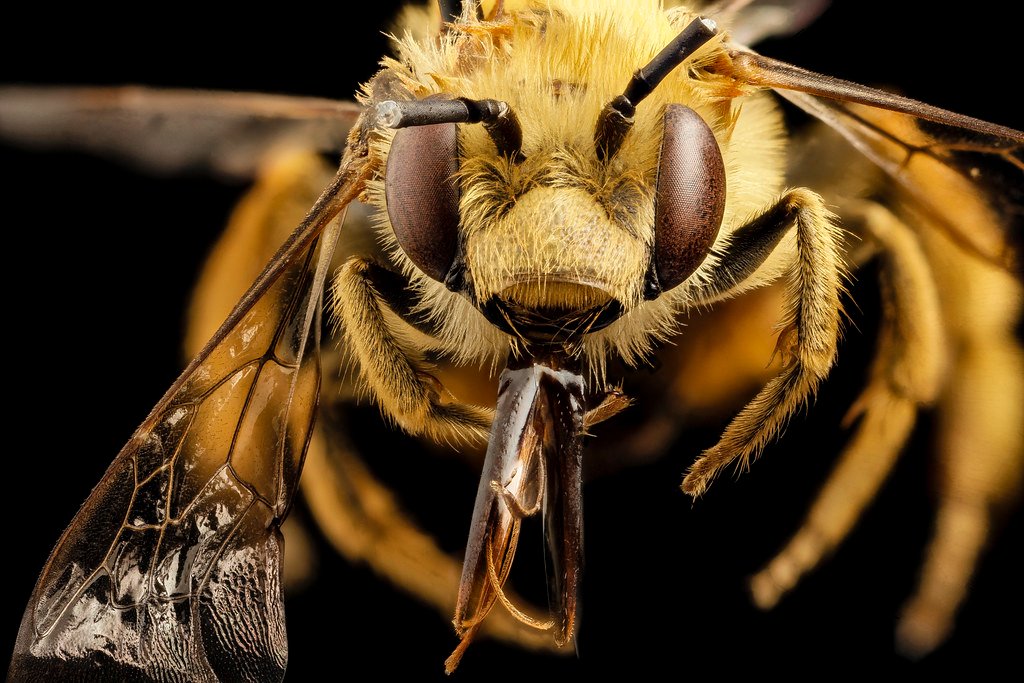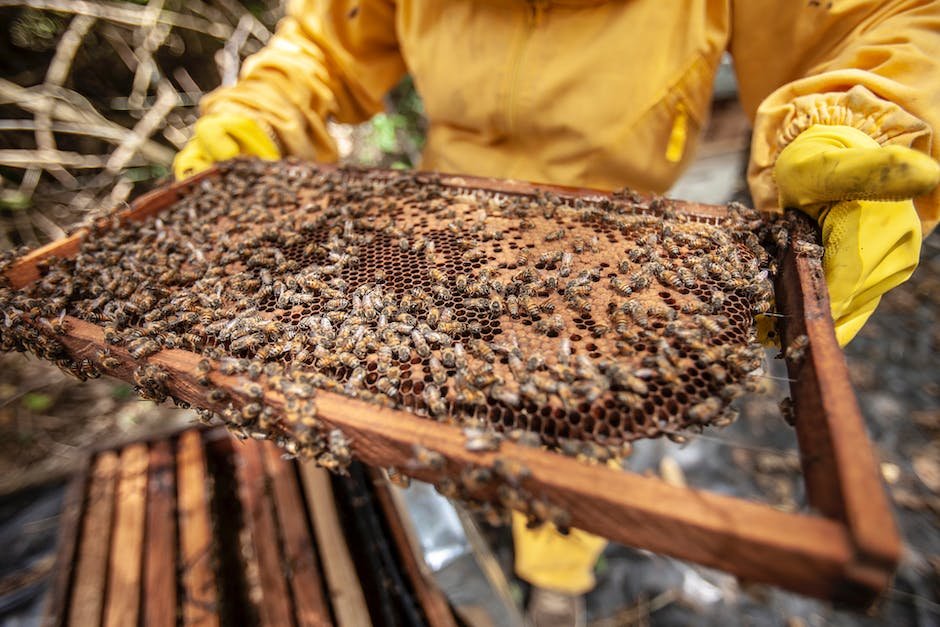Buzzing through the air, tirelessly collecting nectar from flowers, bees are nature’s little artisans, responsible for pollinating countless plants and ensuring the survival of our ecosystems. However, just like us, these industrious creatures can sometimes fall victim to dehydration, especially during scorching summers or in arid regions. Because bees play a vital role in sustaining our delicate ecosystem, it is essential for us to assist them during times of drought. In this article, we will delve into the delicate matter of bee dehydration and provide you with a comprehensive guide on how to handle this issue with care and compassion. So, grab your imaginary beekeeper’s veil and join us on this buzzworthy journey of helping our furry, buzzing friends.
Table of Contents
- Preventing Bee Dehydration: Understanding the Importance of Water Sources
- Recognizing Signs of Bee Dehydration and the Impact on Colonies
- Creating Bee-Friendly Water Stations: Tips for Ensuring Adequate Hydration
- Nurturing Bee Health: Best Practices for Efficient Watering Techniques
- Addressing Bee Dehydration Emergencies: Quick Remedies to Save Dehydrated Bees
- Q&A
- Key Takeaways

Preventing Bee Dehydration: Understanding the Importance of Water Sources
Bee dehydration is a significant concern for beekeepers and researchers alike. Understanding the importance of water sources and taking steps to prevent dehydration in bees can greatly contribute to the health and well-being of these invaluable pollinators.
Providing a reliable water source is crucial in preventing bee dehydration. Bees require water not only to quench their thirst but also to regulate the temperature within the hive during hot summer months. To ensure their access to water, consider implementing the following strategies:
- Create a Bee-friendly Oasis: Setting up a bee-friendly oasis in your garden or beekeeping area is a thoughtful way to provide bees with a dedicated water source. A shallow birdbath or pond filled with clean water can serve as a landing pad for bees in need of hydration.
- Keep it Fresh: Bees prefer clean, fresh water sources. Regularly replace the water in your bee-friendly oasis to prevent stagnation and the growth of harmful bacteria. This will encourage bees to continually visit the water source.
- Add Floating Objects: Floating objects such as twigs, cork, or stones in the water container will provide bees with a stable surface to land on while they drink. This can be especially helpful for bees that cannot swim.
By understanding the significance of water sources and taking proactive steps to prevent bee dehydration, we can contribute to the overall vitality and survival of our precious bee populations. Let us continue to care for these incredible creatures and appreciate their role in maintaining the delicate balance of our ecosystems.

Recognizing Signs of Bee Dehydration and the Impact on Colonies
Bee dehydration is a critical issue that can have a severe impact on colonies and bee populations. By recognizing the signs of dehydration in bees, beekeepers and conservationists can take the necessary steps to ensure their survival. Here are several key indicators to watch out for:
- Erratic flight patterns: Dehydrated bees often exhibit shaky or unsteady flight patterns. They may struggle to maintain their balance and appear disoriented.
- Inactivity: Dehydrated bees may become lethargic and spend more time clinging to the hive, rather than foraging for nectar. This reduced activity is a clear sign of dehydration.
- Reduced productivity: Dehydration negatively affects a bee’s ability to perform basic tasks, such as collecting pollen, producing honey, and caring for larvae. A decrease in productivity within the colony is an alarming indication of dehydration.
In order to mitigate the impact on colonies, it’s essential to address the issue of bee dehydration promptly. Here are some actions you can take:
- Provide water sources: Place shallow water containers with a landing platform, such as rocks or twigs, near the hive to allow bees easy access to water.
- Use wet sponges: Dampen sponges and place them near the hive, allowing bees to drink from the sponge’s surface.
- Create shade: Provide shade in the apiary using umbrellas or shade cloths to prevent intense heat, which can contribute to dehydration.
- Ensure forage availability: Maintain a diverse range of flowering plants around the hive to provide bees with a constant supply of nectar, thus reducing their risk of dehydration.
By recognizing signs of bee dehydration and implementing preventative measures, we can protect these vital pollinators and safeguard the health of their colonies. Taking action today can contribute to the long-term well-being of our bee populations.

Creating Bee-Friendly Water Stations: Tips for Ensuring Adequate Hydration
In the world of buzzing bees, hydration is key! As we all know, ensuring that the hardworking bees have access to water is vital for their survival. But why just provide any water source when you can create a bee oasis? Here are some useful tips to guarantee these tiny pollinators have a refreshing and safe spot to quench their thirst.
1. Pick the Perfect Spot: Choose a shady area in your garden, preferably near flowers. Bees tend to get dehydrated quickly when they have to travel long distances for water, so having a water source close to their feeding grounds is ideal.
2. Provide Different Access Points: Bees have diverse preferences when it comes to drinking water. Some like landing on shallow surfaces, while others prefer sipping water from plant leaves. Offering various options, such as shallow dishes, birdbaths, or even wet pebbles, caters to the different drinking needs of these industrious insects.
3. Add Floating Platforms: To ensure bees’ safety, place floating platforms or objects like corks or sticks in the water container. This way, if a bee accidentally falls in, it will have a chance to climb back out without drowning.
4. Keep it Fresh and Clean: Bees are quite sensitive, and stagnant water can harbor harmful bacteria. Change the water regularly, especially during warm weather, to maintain its cleanliness. Additionally, avoid using pesticides or chemicals in the vicinity of the water station, as bees may unknowingly consume them.
5. Make it Bee-autiful: Why not decorate the area around the water station with bee-friendly plants? Plants like lavender, rosemary, and sunflowers not only enhance the visual appeal but also attract bees. Creating a vibrant and inviting atmosphere will surely make the bees feel right at home!
With these tips, you’ll be well on your way to creating a bee-friendly water station that not only provides hydration but also contributes to the overall well-being of these marvelous pollinators. So, let’s quench their thirst and support their important role in our ecosystem!

Nurturing Bee Health: Best Practices for Efficient Watering Techniques
Ensuring the wellbeing of bees is crucial for the health and longevity of our ecosystems. One often overlooked aspect of nurturing bee health is efficient watering techniques. By implementing best practices for watering, we can create a thriving environment that supports these incredible pollinators. Here are some tips to help you optimize your watering routine and protect bee populations:
- Strategic Placement: Position water sources near flowers and bee-friendly plants to attract these busy pollinators.
- Shallow Containers: Provide small, shallow drinking stations, ensuring that bees can access the water without the risk of drowning. Pebbles or floating objects can be added to give bees a landing pad.
- Keep It Fresh: Regularly change and replenish the water to prevent stagnation, as bees prefer clean sources.
- Minimize Chemicals: Opt for natural water sources or use rainwater rather than tap water, as chlorine and other additives may harm bees.
- Consider Bee Baths: In addition to traditional watering methods, consider creating an area with damp soil or sand that bees can use for hydration.
By following these best practices, we can play an active role in nurturing bee health and supporting their vital role as pollinators. Efficient watering techniques not only benefit bees but also contribute to the overall health of our environment. Let’s all do our part in preserving these incredible creatures and the ecosystems they help sustain.
Addressing Bee Dehydration Emergencies: Quick Remedies to Save Dehydrated Bees
Bees are remarkable creatures that play a vital role in our ecosystem. Sadly, they are not immune to the dangers of dehydration. As conscientious stewards of our environment, it is crucial that we equip ourselves with knowledge about addressing bee dehydration emergencies and quick remedies that can save these valuable pollinators.
When encountering dehydrated bees, swift action is essential, as they may not survive for long without assistance. Here are some effective remedies:
- Providing a water source: Set up shallow water stations in your garden using a shallow dish or bowl. Fill it with fresh water and arrange pebbles or stones inside to serve as perches for the bees. Make sure to keep the water level low, allowing the bees to land safely and access the water without drowning.
- Making a sugar water solution: Prepare a sugar water mixture by dissolving four parts water with one part organic cane sugar. Soak a clean cloth or sponge in the solution and place it near the struggling bee. The bee can then drink the solution, providing it with much-needed hydration and energy.
- Creating shady spots: Bees can become dehydrated due to excessive heat and sun exposure. By providing shaded areas in your garden, bees can take refuge from the scorching heat and cooldown. Planting trees, installing bee-friendly shelters, or even using umbrellas in bee-populated areas can help create necessary shade for these tiny superheroes.
Q&A
How do bees get dehydrated?
Bees get dehydrated when they are unable to find a reliable water source. With global warming and urbanization, natural water sources are often scarce, leaving bees struggling to stay hydrated.
Why is dehydration a problem for bees?
Dehydration can lead to a wide range of problems for bees, including a decrease in honey production, difficulty regulating their body temperature, and even death in extreme cases. It is crucial to address bee dehydration to ensure their well-being and the health of their colony.
What are the signs of bee dehydration?
Signs of bee dehydration include bees congregating around water sources, increased activity at birdbaths or fountains, bees drinking from pools or puddles, and bees appearing lethargic or disoriented.
How can I help bees stay hydrated?
You can help bees stay hydrated by creating a shallow water source in your garden. Fill a shallow dish or tray with clean water and add floating objects, like pebbles or twigs, to provide the bees a safe place to land while drinking. Ensure the water is refreshed regularly.
Can I use chemicals or additives in the water to help bees?
No, it is essential to keep the water chemical-free to prevent harm to bees. Chemicals or additives can be toxic to bees and may also contaminate their food sources. Stick to pure, clean water to keep the bees safe.
What if I have a swimming pool or large body of water in my yard?
If you have a swimming pool or large body of water, it is crucial to take precautions to protect bees. Cover the pool or provide floating objects for bees to land on safely. You can also create alternative water sources nearby to divert their attention from the pool.
Is it possible to provide water for bees in urban environments?
Yes, urban environments present a challenge, but it is still possible to provide water for bees. Consider placing small dishes or containers with water on balconies, rooftops, or gardens. Even a small effort can make a significant impact in helping bees find water sources.
Should I be concerned about bees stinging me while I help them hydrate?
While bees are generally docile when they’re focused on hydrating, it is advisable to move calmly around the water source and avoid sudden movements. Bees are unlikely to sting unless they are threatened or provoked, so keeping a respectful distance should minimize any concerns.
Key Takeaways
As we bid adieu to this buzzing expedition of understanding how to provide a refreshment oasis for our precious pollinators, we hope you have been inspired to become the bee’s noble knight in shining honey. Through this journey, we have uncovered the delicate balance between the vitality of water and the survival of these tiny wonders.
Remember, dear reader, that a bee’s life depends not only on the nectar it collects but also on the water it sips. By implementing simple yet impactful practices, such as providing water sources and creating bee-friendly habitats, you have the power to make a substantial difference in their lives.
In this tumultuous world where climate change looms over our fragile ecosystems, it is crucial that we stand together as caretakers of nature’s most remarkable creations. As we care for bees, we care for the intricate tapestry of life itself, fostering a magnificent symphony that resonates in every nook and cranny of our planet.
So as you revel in the melodies of their harmonious buzz, let the knowledge gleaned from this bee hydration odyssey serve as a guiding compass. Spread the word, inspire others to sow the seeds of compassion for these tireless pollinators. Together, let us fortify the bond between bees and their indispensable role in sustaining our lush landscapes.
As we part ways, let us not forget that even the tiniest acts, like placing a small dish brimming with water or planting native flora, can create ripples of profound change. May the nectar of wisdom acquired in this humble article intertwine with your endeavors, transforming every garden into a refuge of hydration and sustenance.
It is time, intrepid bee guardians, to rise to the occasion. Take flight with this newfound knowledge, and join the ranks of those in harmony with nature’s awe-inspiring rhythm. The bees are counting on us, as we too rely on their diligent pollination, to weave a future where vibrant blooms and sumptuous harvests thrive in perpetual abundance.
Farewell, dear reader, and may your every interaction with a thirsty bee be a moment of shared exuberance, gratitude, and the knowledge that you are safeguarding a world where they can dance in dawn’s first light, refreshed and ready to embark on their essential, enchanting quest.
As an affiliate, my content may feature links to products I personally use and recommend. By taking action, like subscribing or making a purchase, you’ll be supporting my work and fueling my taco cravings at the same time. Win-win, right?
Want to read more? Check out our Affiliate Disclosure page.